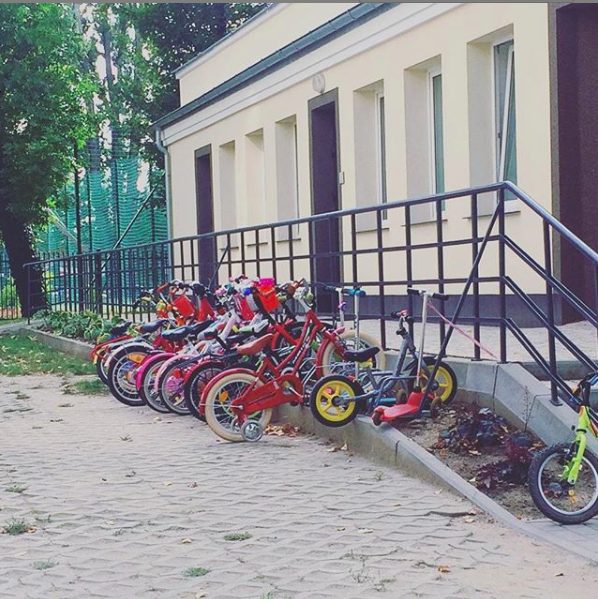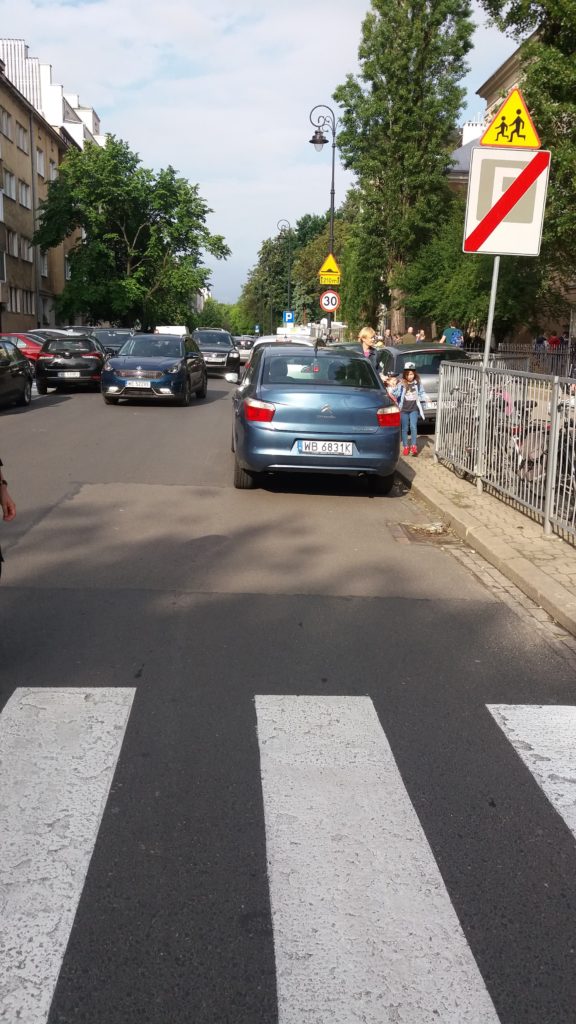The road to school is a topic that is increasingly discussed in the context of child safety, car traffic and organizing urban space. European cities are already running campaigns and pilots to encourage parents to switch from a car to a bicycle, public transport or walking. Polish cities are beginning to follow him, though very slowly, declaring their readiness to fight the problem. Is it enough to significantly reduce car traffic in the vicinity of schools?
Real threat
Such an inconspicuous ride to school can be associated with many risks. First of all, there are more and more cars parked in the wild outside of designated parking spaces in front of schools. A vehicle parked in this way causes not only traffic difficulties, but also limited visibility, which definitely increases the risk of hitting children and other pedestrians. As reported by WHO, 21 percent. road accidents involve young people under 18 years of age. Children and adolescents are also at the forefront of the death toll . There have already been cases of knocking down children on the school premises, also with us, e.g. in Warsaw. This year’s deduction of a student in Ursus was thoroughly described by the Zielone Mazowsze Association.
In the context of paved sidewalks blocked by cars parked “for a while” and “in the wild”, and invisible pedestrian crossings, even actions such as “Bike May” seem to be meaningless, because children have a problem changing to a bicycle driving to school or kindergarten on sidewalks and paths blocked by incorrectly parked vehicles.

Caring for the air we breathe
The daily traffic of passenger cars also has a negative impact on the environment and the urban microclimate. The amount of exhaust gas released into the air every day during the hours of increased traffic has a huge impact on the formation of smog, and thus on the deterioration of the quality of life of the inhabitants of urban agglomerations. The mere accumulation of cars in one place and at the same time in front of a school or kindergarten generates a huge amount of exhaust gas that is inhaled directly by children. According to statistics, almost 40 percent. Every day, parents of students drive to school and it smells bad.

We should also remember that standing in traffic every day exposes children to inhaling a significant amount car exhaust fumes, which negatively affects their health and well-being. This, in turn, may have an adverse effect on concentration during the day and the acquisition of school knowledge.
In the context of climate change, limiting passenger car traffic is already a priority and a necessity. In addition, the environmental awareness of city dwellers who make their choices more deliberately is also increasing. They no longer want to live in smelly exhaust fumes, concrete jungles where they fear to go for a walk and breathe polluted air. They want green, clean metropolises that create comfortable living conditions.
Let’s take care of the traffic
Parents want to facilitate and shorten their children ‘s journey to school and drive them by car to the very door of the facility. However, in doing so, they can contribute to making their children more obese and creating bad exercise habits. In Poland, every fifth child is overweight or obese! In addition to shaping correct eating habits, you should also take care of the movement of children. Such a daily portion of traffic can be provided, for example, by replacing the car with a bicycle or a walk. Even if you cannot give up the car completely because you are coming from a distant neighborhood, park the car further from the school . If a child walks 200 meters in the morning and 200 meters to the car after school, it will have a positive effect on his body, and the way to school will provide him with new impressions and experiences!
Learning to be independent, the right of the child
There are countries, for example Switzerland, where pre-school children go to the institution on their own. Parents are encouraged to allow their child to walk a short distance from home to kindergarten. The action shows parents, but also other road users, how important road safety is in the context of children’s right to a safe road to school.
Cycling to school is a great opportunity to teach your child to be independent. Also, parking the car further than in front of the school door and allowing the child to walk several hundred meters to school on his own is a great learning of independence that develops our children. The earlier children discover hiking and biking tours in the city, the more they will appreciate them in the future. Viennese preschoolers and their parents receive educational materials, such as a map “How to get to kindergarten”, which invites parents and children to move around actively.

Following Europe
A great example of a city that restricts car traffic within schools is Vienna. The capital of Austria faced a considerable challenge, because – in line with the mobility strategy – by 2025 it is required to reduce passenger car journeys by 25%. Vienna last year decided to close the streets in front of one of the schools for 30 minutes – during the morning walk-up of the children. Petra Jens – the plenipotentiary for pedestrian communication in Vienna, author of a pilot program limiting the possibility of transporting children to school, emphasizes in her statements that despite the high awareness of the inhabitants of the Austrian capital, the campaign was not without complaints and objections . However, as the data of the authors of the campaign show, after the first month of the street closing, parents stopped parking at the school door, even when the physical entry restrictions in the form of gates disappeared. Finally, the parents and, of course, the children are satisfied with the effects of the action, and the city is facing further temporary traffic restrictions on the streets in front of schools and kindergartens. Similar solutions have also been decided by London, Edinburgh and Hamburg.

Poland is not lagging behind, but…
Until now, the infrastructure of Polish cities encouraged people to travel by car rather than abandon them in favor of other means of transport. For some time now, this trend has slowly started to reverse. Cities spend more and more funds on the development of bicycle routes or the creation of new bus lanes. Therefore, we are more and more willing to choose a trip by bike or bus instead of being stuck in traffic jams every day. Polish metropolises are beginning to take a step forward and want to follow the achievements of European cities. Kraków, Poznań and Wrocław are already announcing their readiness to take measures to make the road to school safer and more ecological. In Warsaw, unfortunately, there is no will to deal with this issue. President Soszyński, responsible in Warsaw for transport matters,
during the meeting of the Social Dialogue Committee for Transport, at our request to consider a solution involving the closing of streets in the vicinity of schools and kindergartens, he replied that he did not see such a possibility
Text: Gabriela Kuc, Agnieszka Krzyżak-Pitura
